9 Houseplants that improve home environment
Did you know that we can’t expect pure air or pollution free environment even within the four walls of your room? Yes, the air inside the room can be harmful or poisonous to human health, animal or even plants. Dust and dirt are saved by closing the doors and windows coming from outside. But cooking, burning candles, and bringing home new clothes, dry-cleaning and the household product can cause impure gas to accumulate. In the absence of air circulation, gasses remaining inside the rooms cannot move out and, therefore, create air pollution.
The introduction of organic particles, molecules or other injurious materials into Earth’s atmosphere makes the air impure. Besides, the oxygen that we breathe in to purify our blood is may not contaminate. There are a number of gasses and dust particles in the air act which hurt our health, injure the environment and cause damage to property. Air pollution caused by some impurities are visible (e.g., the brownish-yellow color of smog) but most are invisible to our eyes. Besides upsetting human health and the surrounding, pollutants blur the air and obstruct visibility. In addition to the short-term visibility problem, pollutants can also have wide-reaching, global effects — such as reduction of the ozone layer leading to a change of climate.
Hazards of home and plant species
There is no doubt that air pollution is the cause of a number of disease and health conditions. Many of us are allergic to dust and particles. They cause sneezing, disturb breathing and even cause asthma. At least eight pollutants can cause health injury, damage the environment, and property. They are mainly benzene, carbon monoxide, nitrogen dioxide, formaldehyde, sulfur dioxide, ozone, particulate matter and lead. The particles of air containing these substances enter our body during breathing and cause fatigue, respiratory diseases and heart problems.
The Common Pollutants
Formaldehyde a common air pollutant is found in particle board, insulating material, and paper products. It causes irritation of the eyes, throat, and nose. Formaldehyde causes nose bleeding, worsen asthma and allergies and even lead to cancer.
Benzene found in inks, oils, paints, plastics, and rubber is a colorless liquid and is supposed to be a carcinogen. Benzene affects the skin and the eyes by causing irritation. Air pollution due to benzene, even at low levels for a long time causes headaches, loss of appetite, drowsiness, nervous disorder and psychological problems. The blood system is affected, resulting in anemia and disease of the bone marrow.
In the presence of sunlight, Ozone (O3) in the air formed when nitrogen oxides (from automobile and utility burning fuel sources) and volatile organic compounds (from sources such as gasoline, paints, inks and solvents) cause skin diseases.
Carbon monoxide coming from the combustion of coal, oil, gasoline or even candle affects the blood circulation system, influence eye vision and can cause disturbed mental functioning. Chronic exposure can adversely affect fetal development and can lead to damage to the heart. Keeping safe from air pollution of carbon monoxide is, therefore, vital for health.
Sulfur dioxide (SO2) is formed from the burning of fossil fuels that contain sulfur compounds can be transformed into other products such as fine particulate of sulfates and sulfuric acid mist. The most obvious health effects are irritation and inflammation when the body tissues come in contact with the gas. Sulfur dioxide can increase the severity of existing respiratory diseases such as asthma, bronchitis, and emphysema. It also constricts the air passages, making it difficult to breathe.
Nitrogen dioxide (NO2) produced due to combustion of fossil fuels during high temperature in electric power manufacturing units, industrial processing facilities, automobiles and chemical processing units cause air pollution. Nitrogen dioxide affects the lungs by causing acute bronchitis or pneumonia and decreases resistance to respiratory infections. Longer exposure can also cause chronic lung damage. It also contributes to acid rain.
Particulate matter (PM) consists of both solid elements and liquid droplets present in the air as poisons. Many man-made and natural sources of constituents give up volatile or gaseous pollutants that combine in the atmosphere to form PM. The components of particle matter are ash, dust, mist, vapor, fumes and smoke emitted from fuel-burning, incinerators, industrial setups, agricultural and motorized vehicles. Air pollution due to particle matter is a reason for a serious health problem, especially for people with existing heart or lung diseases—such as asthma, chronic respiratory disease, and heart ailments.
Air pollution due to particle matter affects visibility and is a concern for the country in air and land and riverine traffic management.
The plant leaves become layered with particulate matter, reducing sunlight and consequently interfering with photosynthesis and plant growth which indirectly harms human.
Role of houseplants in freshening the environment
Many plant species are known to detoxify the poisons or cut down air pollution. Plant scientist has triggered studies to be conducted to find out the mechanism of controlling air pollution by plants. The National Aeronautics and Space Administration (NASA), identified 19 different common houseplants that remove common airborne pollutants. Of the 19 plants, 17 can be completely kept inside the rooms as houseplants. Our environment and our home can be ridden of pollutants with contaminant absorbing plants and make it free of air pollution. Thanks to environmentalists who have given sound proof of keeping some special houseplants plants for our benefit!
What is the mechanism of air pollution control?
We all know plants take in carbon dioxide and in the presence of sunlight and water to produce starches, carbohydrates, sugars, and protein. At night in darkness or in light, the carbohydrates are converted to energy, carbon dioxide, and water. Besides plant are able to able to take the volatile gaseous organic substances from the air through the stomata of the plant leaves. The gaseous substances, then translocate to the root zone. However, the plant’s own defensive mechanism destroys some of the organic substances. The microorganisms, present in the root zone use a little portion of it as food or break it into inorganic molecules. When plants transpire the volatile substances in the air controls airborne microbe sand mold spores in the air. A rise of humidity due to transpiration also affects the toxic containing air to be pulled into the soil and taken by root tissues. Thus, the air is purified!
Plants that cut pollutants from our home and surroundings
Nature has endowed us with so many species of plants suited to each every environment. Choosing right plant for your environment would be knowing the right species. Today we want to introduce to you 9 common species that you can grow, adorn your house with colors and keep away from air pollution. Here’s something good. You won’t have to make your house a forest. One anti-polluting species is enough to cover a space of 100 sg ft. You can easily calculate how many you will need. You may have a collection of plants, keep some outside and switch around the house with your changing mood. Oh yes! they also give you lovely flowers and natural scents to add to your aromatherapy.
The Tables give you a list of only 9 exciting houseplants that you would love to bring to your home. You may choose, depending on the pollutants that you may likely have, given in the article. Nevertheless, the profuse nature of growth and variegated appearance, the flowers and scents will surely make our home environment healthy and happy!
Previous insight: Houseplants: How they keep us happy!

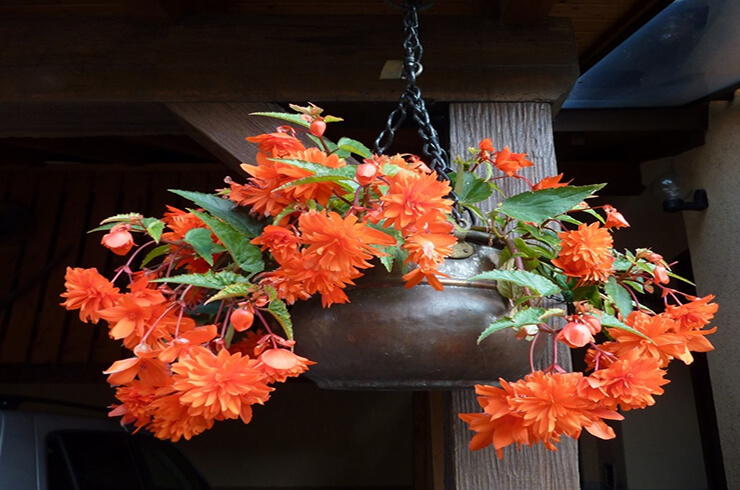
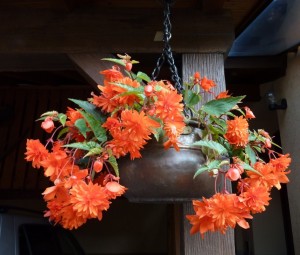
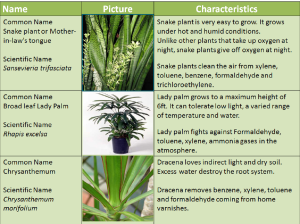
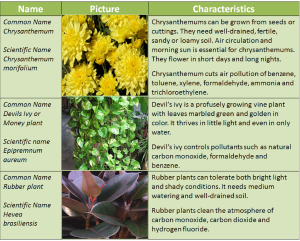
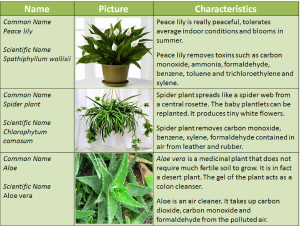
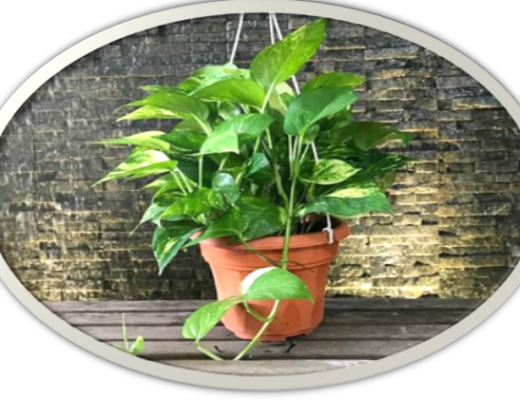
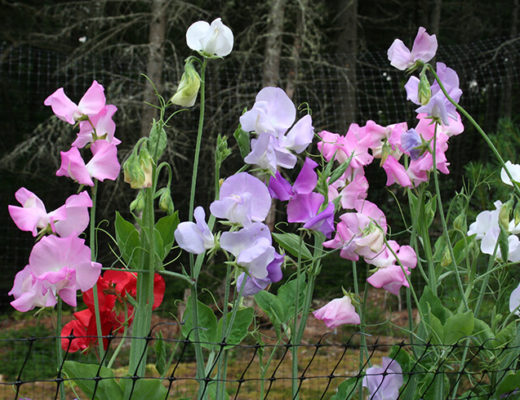
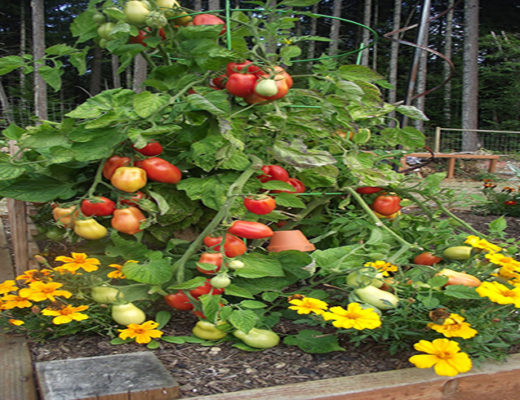
8 Comments
admin
30/05/2016 at 20:51Thanks.
admin
30/05/2016 at 21:19Thanks for letting me know.
admin
01/06/2016 at 14:45Thank for sharing
admin
01/06/2016 at 22:37You need internet on both to print on one printer by selecting the option.
admin
06/06/2016 at 19:56Thank you very much
admin
06/06/2016 at 19:57It’s wordpress. Contact Startern.com. They will help you out. Thanks
Business Company
31/01/2019 at 20:31Well I truly liked studying it. This information provided by you is very effective for proper planning.
Temeka
18/02/2019 at 17:56First of all I want to say terrific blog! I had a quick
question that I’d like to ask if you do not mind. I was curious to find out how you center yourself and clear your mind prior to writing.
I’ve had a hard time clearing my mind in getting my thoughts out.
I do take pleasure in writing however it just seems like
the first 10 to 15 minutes are usually lost simply just trying
to figure out how to begin. Any suggestions or
hints? Cheers!